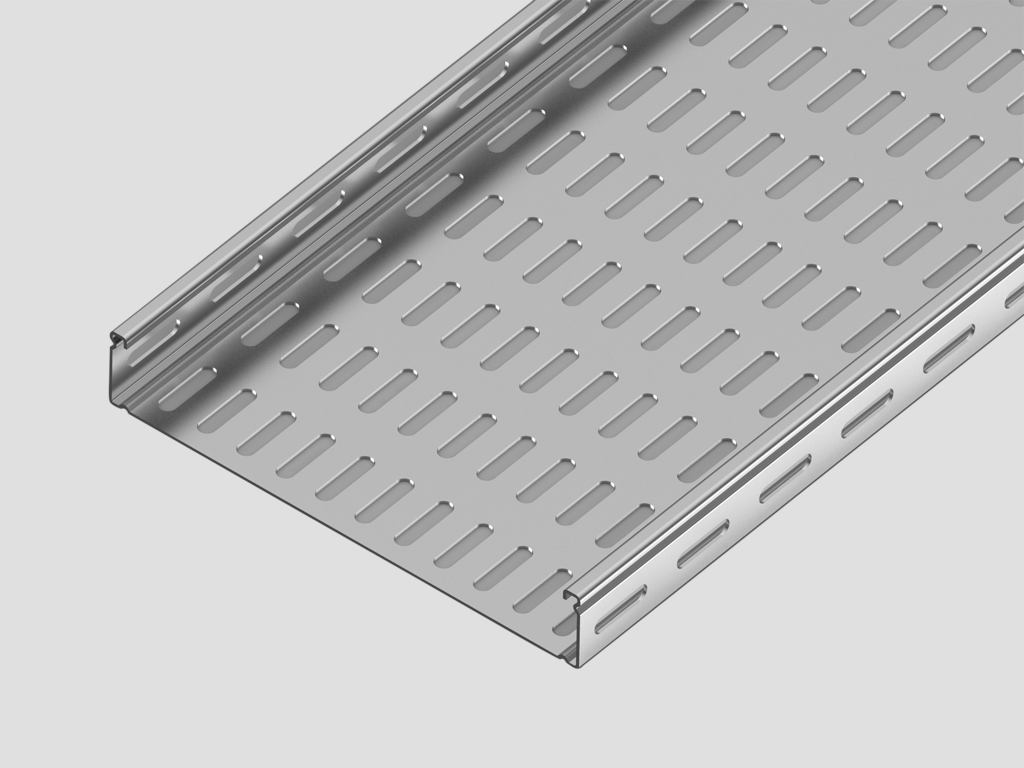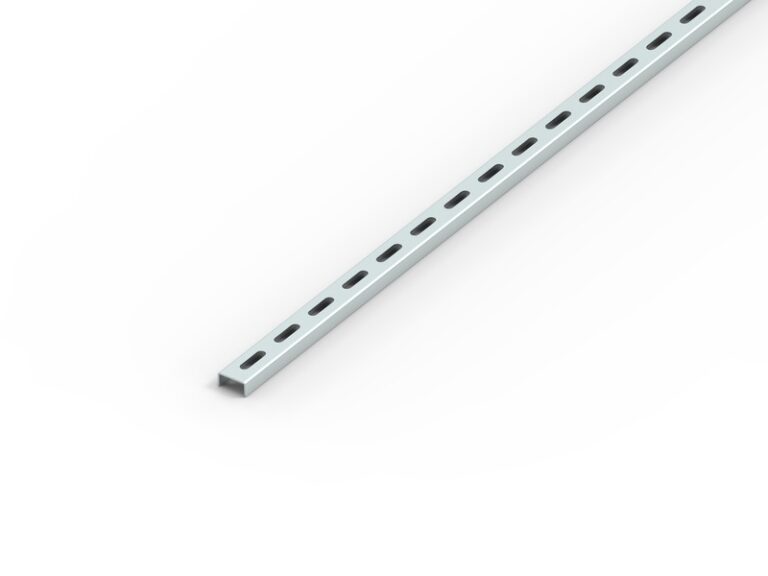Slotted C Channel
- Home
- Products
Slotted C Channel (Double Bended)
Looking for a cable tray support system that stands out in terms of strength and versatility? Our Double Bended C Channel is the solution you’ve been searching for. Here’s why it’s a game-changer for your cable management needs :
- Unmatched Stability : The double-bended design isn’t just about aesthetics; it adds an extra layer of stability, ensuring your cable trays remain secure even in demanding conditions.
- Heavyweight Champion : With an exceptional load-bearing capacity, it’s more than capable of supporting heavy cables and trays, making it an ideal choice for diverse applications.
- Structural Integrity : Our C channels are designed to enhance the structural integrity of your support system, promoting long-term reliability and safety.
- Versatile Customization : The double bended C channel is as versatile as it is robust. It’s slotted for easy adjustments, allowing you to customize it to meet your unique project requirements effortlessly.
- Streamlined Cable Routing : Enjoy efficient and organized cable routing with the slotted design, preventing cable damage and maintaining an orderly cable tray system.
- Built to Last : Crafted from durable materials, our Double Bended C Channel ensures longevity and durability, making it a wise investment for your infrastructure.
Complete Installation Guide :
Materials and Tools Needed :
- Full threaded rods
- C channels
- Nuts and washers
- Appropriate fastening tools (wrenches, pliers)
- Measuring tape
- Level
- Drill and anchors (if attaching to a wall or ceiling)
- Safety gear (gloves, safety glasses)
Slotted Strut Channels
Single strut channels, also known as single slotted channels, are the most basic type of strut channels. They feature a single continuous slot on one side, which allows for easy and versatile attachment of various components.
Technical Specifications :
- Material: Typically made from steel, aluminum, or stainless steel.
- Sizes: Available in a range of widths and lengths.
- Slot Dimensions: The slot dimensions can vary, but they are typically standardized for compatibility with a wide range of accessories.


Solid Channels
Solid channels, as the name suggests, have no slots. They are used when a continuous, uninterrupted surface is required for support, such as for structural beams or as a base for other accessories.
Technical Specifications :
- Material: Typically made from steel or aluminum, and occasionally stainless steel.
- Sizes: Available in various sizes and thicknesses.
- No Slots: Unlike slotted channels, solid channels have a flat, solid surface with no openings.

Slotted C Channel (Double Bended)
Installation Steps
- Determine the precise locations where the threaded rods will be installed to support the cable trays.
- Ensure that these locations are suitable and can bear the weight of both the cable trays and the cables.
- Use a measuring tape and mark the spots where the rods will be placed.
- Ensure the distances between each rod are according to your cable tray specifications and system requirements.
- If installing on walls or ceilings, drill holes where you've marked the spots. Use anchors to secure the holes if the material is not strong enough to hold the weight.
- Attach the C channels to the full threaded rods. The channels should be perpendicular to the rods and at regular intervals to support the cable trays effectively.
- Insert the full threaded rods through the C channels.
- Attach nuts and washers to the threaded rods on both sides of the C channel. Ensure that the nuts are tightened securely to hold the rod and the C channel in place.
- Use a level to ensure that the C channels are aligned horizontally or according to your project's requirements.
- Once the rods and C channels are securely in place, lay the cable trays on top of the C channels.
- Ensure that the trays are level and supported evenly by the C channels.
- Double-check the alignment, levelness, and the overall stability of the cable trays.
- Tighten any nuts or bolts as necessary to secure the entire system.
- Inspect the installation for any signs of weakness, instability, or misalignment.
- Ensure that all connections are secure and that the cable trays are safe for use.
C channels are commonly made from materials like steel, aluminum, or other metals with high strength and durability.
Yes, C channels are often used in outdoor applications, but proper measures should be taken to prevent corrosion.
Yes, C channels are widely used for load-bearing purposes due to their robust construction and strength.
Consulting with structural engineers or industry professionals can help determine the appropriate sizing for your project.
Yes, C channels are commonly used in residential construction for various structural and framing applications.

